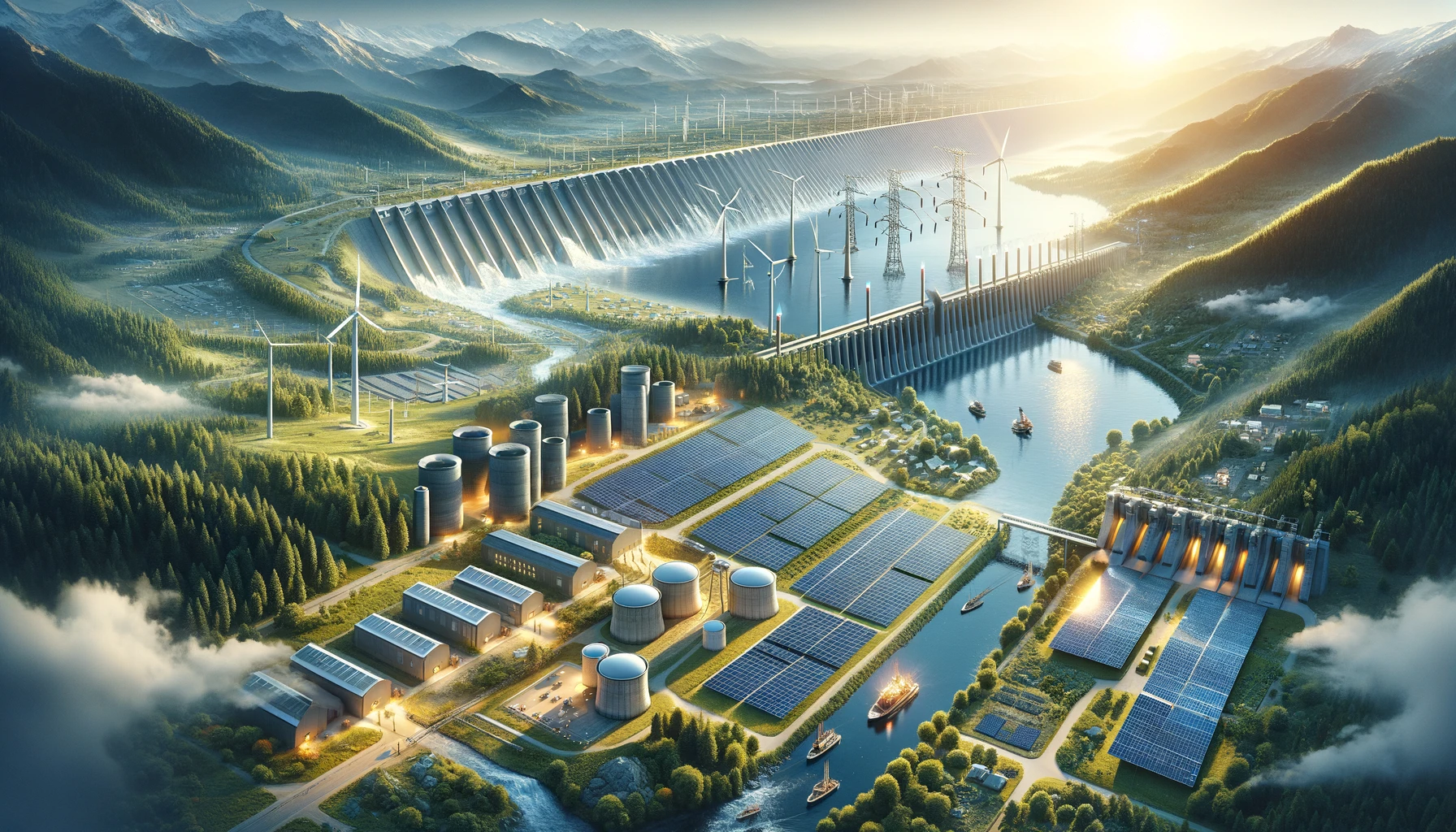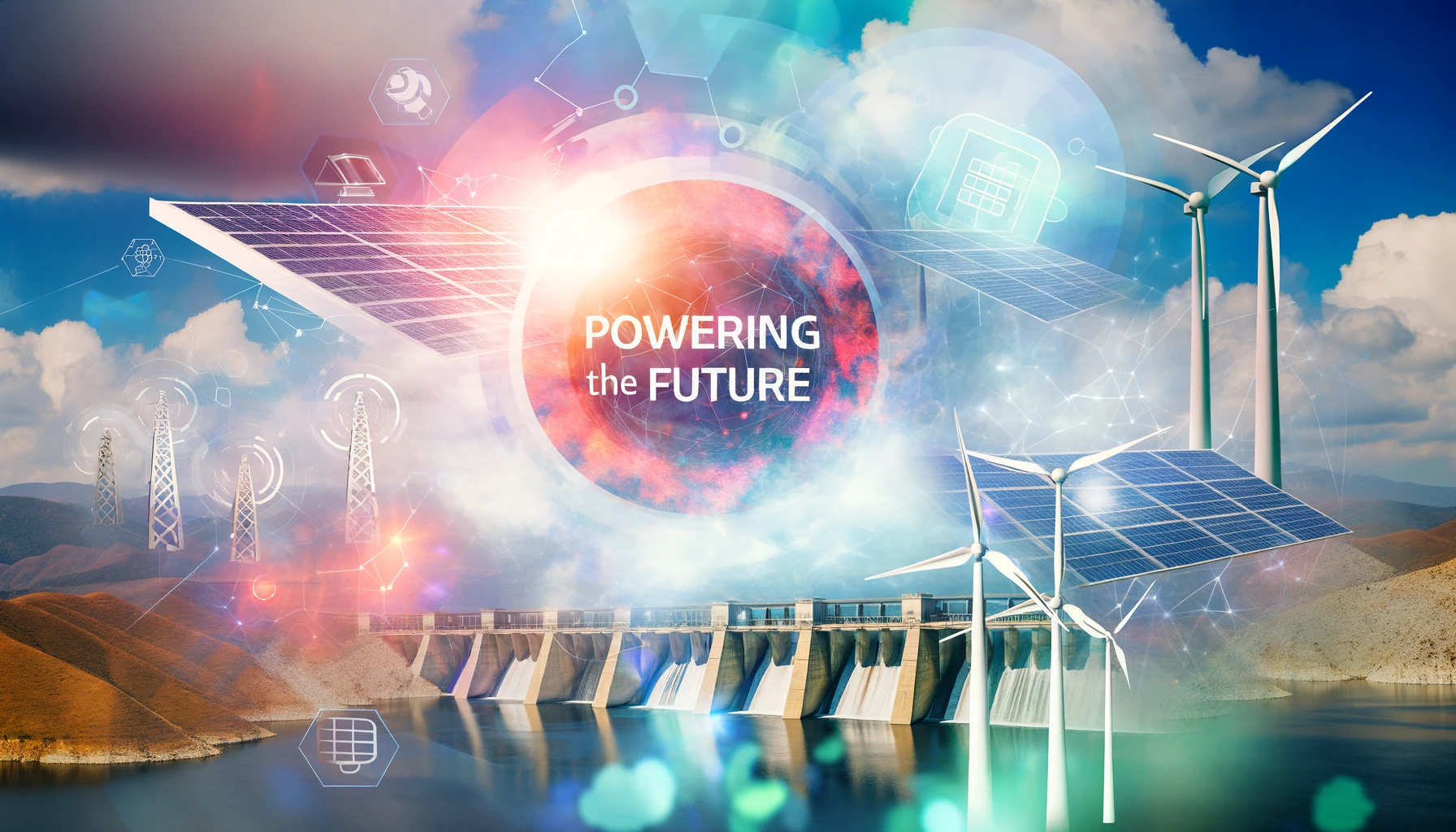
The Rise of Renewable Energy Integration in the Utilities Industry
In the grand theatre of human progress, the sweeping integration of renewable energy within the utility sector takes center stage, unveiling an epic tale of transformation and resilience. Picture a future where the landscape is dotted with solar arrays stretching towards the horizon, where wind turbines stand tall like modern colossi, their blades slicing through the air with silent grace, and where the untamed energy of rivers is harnessed, feeding the insatiable energy grid with a steady, pulsing flow. This future is no longer a figment of imagination but a tangible reality unfolding before our eyes as utility companies worldwide pivot towards a horizon marked by sustainability, resilience, and boundless prosperity. Embarking on a mission to dethrone the age-old reign of carbon-heavy power sources, these pioneers are embracing the inexhaustible forces of nature, setting the stage for an era of clean, sustainable energy.
Renewable Energy Integration
At its core, renewable energy integration is a testament to human ingenuity—an audacious endeavor to reimagine the very fabric of our energy infrastructure. It’s a symphony of science and engineering, where electrons dance along transmission lines, propelled by the gentle caress of the wind or the radiant warmth of the sun. But it’s also a testament to our reverence for the natural world—an acknowledgment that our future prosperity is inextricably linked to the health and vitality of the planet we call home.
The integration of renewable energy sources into the power grid represents a monumental shift in the way we produce and consume electricity. No longer reliant on finite fossil fuels that pollute the air and contribute to climate change, we now have the opportunity to harness the limitless energy of the sun, wind, and water to power our homes, businesses, and communities. It’s a paradigm shift that promises not only cleaner air and a healthier planet but also economic growth, job creation, and energy independence for nations around the globe.
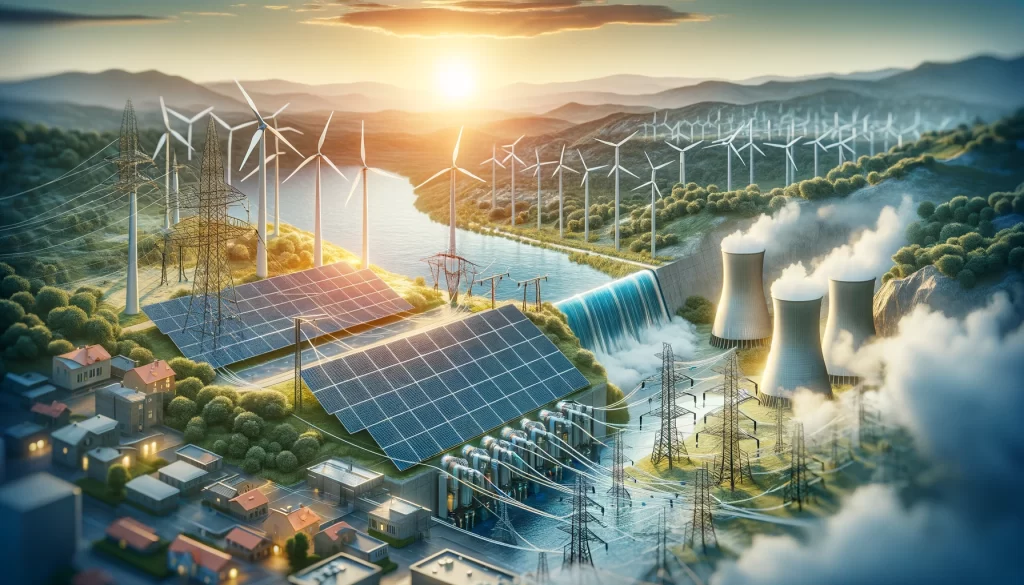

Driving Forces Behind Renewable Energy Integration
But what drives this remarkable transformation? What forces propel us forward on this journey towards a renewable energy future? At the heart of it all lies a convergence of factors—a perfect storm of environmental consciousness, technological prowess, policy support, and economic pragmatism.
First and foremost is a growing awareness of the existential threat posed by climate change. With each passing year, the evidence mounts, and the urgency of the situation becomes ever more apparent. From rising sea levels to extreme weather events, the impacts of a warming planet are being felt around the globe. It’s a stark reminder of the need for decisive action to curb greenhouse gas emissions and transition to cleaner, more sustainable forms of energy.
Coupled with this is a wave of technological innovation that has revolutionized the renewable energy landscape. From advancements in solar panel efficiency to breakthroughs in wind turbine design, the cost of renewable energy has plummeted in recent years, making it increasingly competitive with traditional fossil fuels. It’s a testament to the power of human ingenuity and a harbinger of a future where clean, renewable energy is not only desirable but inevitable.
Of course, none of this would be possible without the unwavering support of policymakers and governments around the world. From renewable energy mandates to tax incentives and subsidies, governments are playing a pivotal role in driving investment in renewable energy infrastructure and integration projects. It’s a recognition of the economic, environmental, and social benefits that renewable energy offers and a commitment to realizing the full potential of this transformative technology.
And let us not forget the economic imperatives at play. As the cost of renewable energy continues to decline, utilities and energy companies are recognizing the economic benefits of investing in clean energy solutions. Not only does renewable energy offer long-term cost savings and revenue opportunities, but it also reduces the risk of exposure to volatile fossil fuel markets and geopolitical instability. It’s a win-win scenario that is driving investment and innovation in the renewable energy sector and paving the way for a more sustainable and prosperous future.
Benefits of Renewable Energy Integration
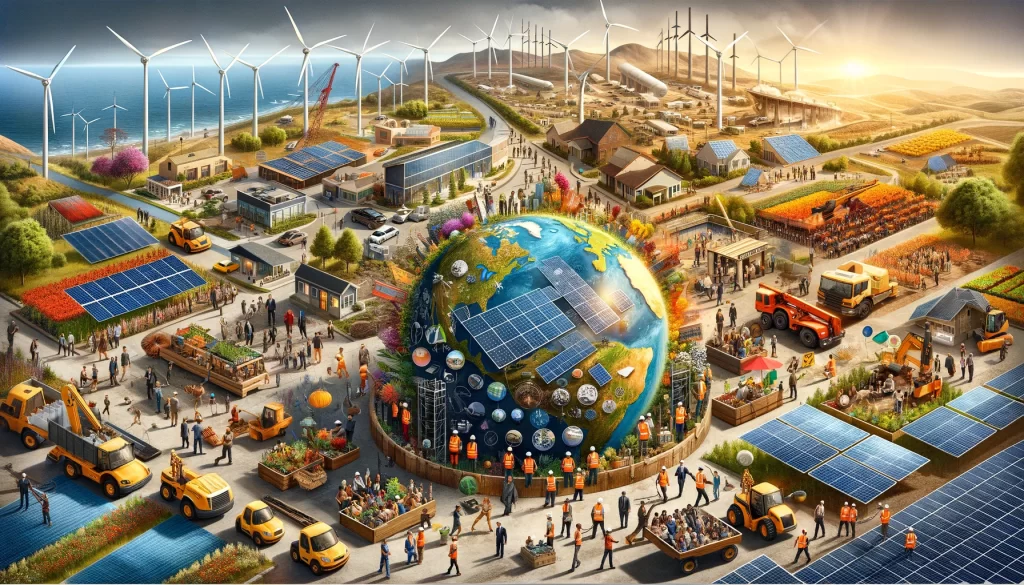
The benefits of this seismic shift towards renewable energy integration are as diverse as they are profound. Beyond the obvious environmental dividends—cleaner air, reduced greenhouse gas emissions, and a reprieve from the ravages of climate change—lie a host of economic, social, and geopolitical rewards.
Consider, for instance, the economic boon afforded by renewable energy projects. Not only do these projects create jobs in construction, manufacturing, and maintenance, but they also stimulate local economies and revitalize struggling communities. From the wind-swept plains of the Midwest to the sun-drenched deserts of the Southwest, renewable energy projects are breathing new life into once-neglected regions, providing employment opportunities and driving economic growth.
But the benefits of renewable energy integration extend far beyond the realm of economics. They also have profound social equity implications. By democratizing access to clean energy, renewable energy projects empower marginalized communities, reduce energy costs for low-income households, and bridge the gaping chasm of energy poverty that afflicts millions around the world. From rooftop solar installations to community-owned wind farms, renewable energy is putting power back in the hands of the people, fostering energy independence and self-sufficiency at the grassroots level.
And let us not overlook the geopolitical ramifications of a world powered by renewables. In a world less beholden to the vagaries of fossil fuel markets, less vulnerable to the whims of petrostates, and less prone to conflict over dwindling energy resources, renewable energy offers the promise of greater energy security and stability. It’s a future where nations can chart their own course, free from the constraints of energy dependence and geopolitical entanglements—a future defined not by scarcity and competition but by abundance and cooperation.
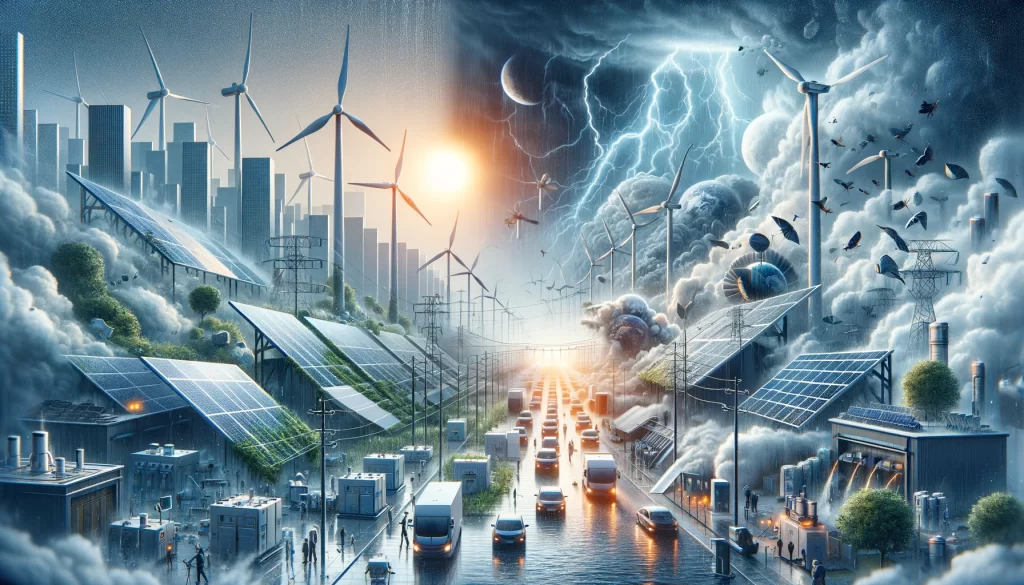
Challenges and Opportunities
Of course, the path to a renewable energy future is not without its obstacles. Intermittency, grid integration challenges, and the need for energy storage solutions are just a few of the hurdles that must be overcome. But in each challenge lies an opportunity for innovation, collaboration, and ingenuity.
Consider, for instance, the challenge of intermittency—the inherent variability of renewable energy sources such as solar and wind. While it’s true that the sun doesn’t always shine and the wind doesn’t always blow, there are myriad ways to mitigate the impacts of intermittency and ensure a reliable and resilient energy supply. From grid-scale battery storage to demand response programs, from smart grid technologies to peer-to-peer energy trading platforms, the solutions are as diverse as the challenges themselves. It’s a testament to the resilience of the human spirit—a reminder that in the face of adversity, we possess the creativity and resourcefulness to overcome even the most daunting of obstacles.
Similarly, the challenge of grid integration—ensuring that renewable energy sources are seamlessly integrated into existing power grids—presents both challenges and opportunities. On the one hand, it requires significant investments in grid infrastructure and transmission capacity to accommodate the variable nature of renewable energy generation. On the other hand, it opens up new possibilities for innovation and collaboration, from microgrids and virtual power plants to blockchain-enabled energy trading platforms. It’s a chance to rethink and reimagine the very architecture of our energy systems, to build a grid that is not only more efficient and reliable but also more democratic and decentralized.
And let us not forget the need for energy storage solutions—the key to unlocking the full potential of renewable energy. From lithium-ion batteries to pumped hydro storage, from flywheels to compressed air energy storage, the options are as diverse as the challenges they seek to address. By storing excess energy when it is plentiful and releasing it when it is needed most, energy storage solutions can help smooth out the peaks and valleys of renewable energy generation, ensuring a steady and reliable power supply for consumers and businesses alike. Moreover, energy storage technologies offer a multitude of ancillary benefits, from providing grid stability and flexibility to enabling the integration of electric vehicles and distributed energy resources. It’s a critical piece of the puzzle—a linchpin in the transition to a renewable energy future.

Conclusion
As we survey the horizon of an evolving energy landscape, the shift toward renewable energy integration within the utilities industry stands not just as an impressive technological leap but as a profound economic and moral evolution. In this era of environmental awareness, the push for renewable energy transcends mere preference, becoming an urgent mandate for action in the face of escalating environmental challenges.
The path to a renewable future, while rich with promise, is laden with hurdles. Challenges such as the intermittency of renewable sources, the complexity of integrating these sources into existing power grids, and the critical need for advanced energy storage solutions are substantial. Yet, within these challenges lies immense opportunity for innovation, collaboration, and a renaissance of our energy infrastructure. This is a clarion call for humanity to leverage its collective ingenuity and resilience, to navigate these challenges, and to unlock the vast potential that renewable energy holds.
At the forefront of this transformative journey is GIRHIMPROM, a company that embodies the spirit of progress and human endeavor in the renewable energy sector. With a storied history in project management and infrastructure development, GIRHIMPROM is adept at spearheading renewable energy projects across a spectrum of needs—from constructing vast solar farms bathed in sunlight to developing hydroelectric schemes that harmonize with the flow of rivers, and modernizing aging infrastructure with the latest technological innovations.
Our mission is unequivocal: to champion a future where renewable energy is not just a vision but a lived reality. It’s a future where each project we undertake marks a step towards mitigating the impacts of climate change, energizing local economies, and addressing the disparities in energy access. It’s a future built on the pillars of technological excellence, economic insight, and an unwavering commitment to environmental stewardship and social equity.
Why Engage GIRHIMPROM for Your Next Project?
- Unmatched Expertise: Our track record of transforming ambitious visions for renewable energy into palpable successes sets us apart.
- Commitment to Innovation: We are at the cutting edge, embracing and advancing green technology to propel the industry forward.
- Purpose-Driven Impact: Our endeavors extend beyond energy generation; they are catalysts for positive change, fostering resilience and sustainability in communities.
Your Invitation to Action with GIRHIMPROM
Embark on your renewable energy journey with us. Whether it’s illuminating landscapes with solar ingenuity, capturing the power of flowing waters, or pioneering solutions for aging infrastructure, GIRHIMPROM stands ready as your ally in sustainable progress.
